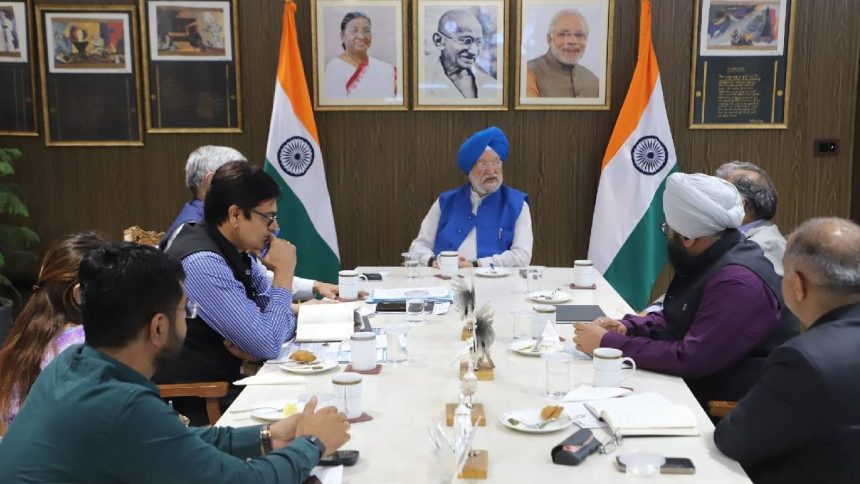
New Delhi: Amid rising geopolitical tensions and volatile global oil markets, India’s petroleum security remains a top priority. Union Minister for Petroleum and Natural Gas, Hardeep Singh Puri, convened a high-level meeting on Monday to review the country’s fuel supply situation.
The meeting brought together top ministry officials and executives from state-run oil companies, including Indian Oil Corporation (IOCL), Hindustan Petroleum Corporation Ltd (HPCL), and Bharat Petroleum Corporation Ltd (BPCL).
In a statement on X (formerly Twitter), Puri emphasised India’s preparedness to meet its fuel demands despite global uncertainty. He credited Prime Minister Narendra Modi’s leadership for bolstering the India’s energy resilience, highlighting the significant diversification of India’s oil import basket. “Under the visionary leadership of PM @narendramodi Ji, we have diversified our import basket substantially and are comfortably placed to meet our fuel supply needs,” Puri stated.
As oil is on the boil, all eyes are on the ball…
In the increasingly volatile geopolitical situation, reviewed the petroleum products supply situation with @PetroleumMin officials and our PSU OMCs. Under the visionary leadership of PM @narendramodi Ji, we have diversified our… pic.twitter.com/J58LSEC2cV— Hardeep Singh Puri (@HardeepSPuri) June 16, 2025
This strategic focus on energy independence is further highlighted by India’s aggressive push to boost domestic fossil fuel production. The most recent initiative involves intensified exploration efforts in the Andaman region. Earlier in the day, Puri described this exploration as potentially yielding “good news,” even likening it to a “Guyana moment”, a reference to Guyana’s significant oil discoveries in recent years.
India’s vast sedimentary basins, covering 3.5 million square kilometers, have been under-explored until recently. Puri emphasised that only eight per cent of this area had been explored historically, leaving considerable potential untapped, particularly offshore.
He credited the current government with opening up previously restricted areas, making one million square kilometres available for exploration and production (E&P). The success of this initiative is evident, with 38 per cent of bids in the ninth round of the open acreage licensing policy originating from this newly accessible area. The Minister expects this to increase to over 75 per cent in the next round.
“There were parts of the sedimentary basin which were no-go areas. So one of the decisions which we took was that 1 million square kilometres of that sedimentary basin, which was a no-go area, has suddenly been made available for E&P,” the minister said.
The government has also issued some of the largest bids globally, offering 250,000 square kilometres for bidding. India’s sedimentary basins are estimated to hold approximately 42 billion tonnes of oil and gas equivalents, underscoring the enormous potential that remains to be harnessed. While offshore exploration is significantly more expensive (USD 100 million per well, compared to USD 4 million onshore), the government’s commitment to investment is apparent in Oil and Natural Gas Corporation (ONGC)’s record number of wells drilled this year.
The recent escalation of tensions in West Asia adds urgency to India’s efforts. The escalating Israel-Iran conflict presents a considerable threat to India’s energy security, trade routes, and commercial ties with both nations. In FY2025, India’s trade with Iran stood at USD 1.68 billion, and trade with Israel reached USD 3.76 billion.










